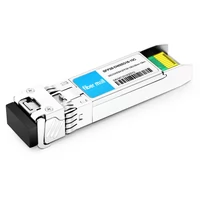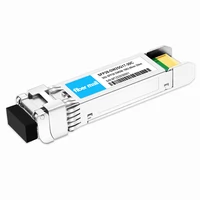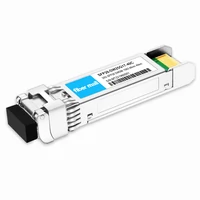DWDM is a crucial technology of data communication in this rapidly changing world. The main reason for this is that it enables increased capacity and efficiency of networks. Demand for better optical transceivers has never been higher since the exponential growth in data traffic. The new 25G DWDM SFP28 optical transceiver is cost-effective while still being high-performing, thus its popularity as a recent development. This post discusses what 25G DWDM can do and where it can be used; this shows that there is more to come from this technology, which will change network infrastructure forever and also help meet demands made by modern data centers today. People working in industries should know about different types of SFP28 optical transceivers so that they may be ready for faster communication advancements in the future.
Table of Contents
ToggleWhat is 25G DWDM and Why is it Important?
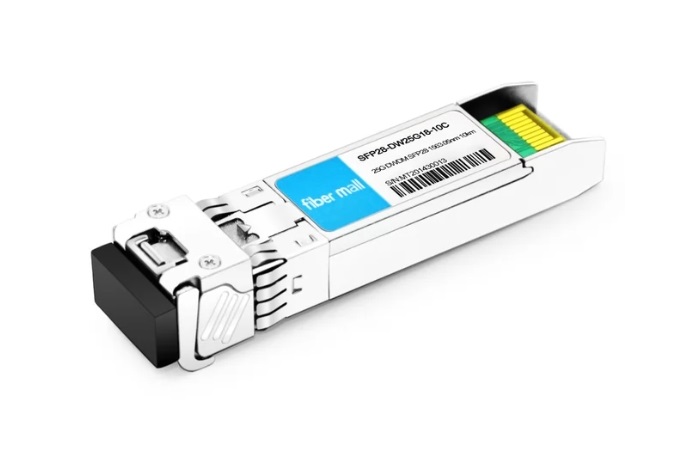
Understanding the Basics of 25G DWDM
The 25G DWDM (25-gigabit Dense Wavelength Division Multiplexing) is a technology that makes use of the principle of wavelength division multiplexing for transmitting data through optical fibers. Essentially, this means putting many wavelengths on one fiber optic cable in order to increase its capacity. This is necessary in modern networks because it allows them to use their bandwidth more effectively and be scalable where needed. Additionally, the 25G DWDM can help data centers and telecommunication providers cope with the ever-increasing demand for speed by offering higher transmission rates without requiring more fibers. What makes the 25G DWDM important is the fact that it enables cost reduction and network flexibility improvement as well as support for future growth, thus becoming an ideal choice during network infrastructure upgrades.
How 25G DWDM Enhances Data Centers
The 25G DWDM improves data centers so that they can transmit more data and work better. It uses a lot of different colors to send 25Gbps data over one optical fiber, which makes the most of existing fiber optic cables and means we don’t have to buy as many expensive new ones. This saves money while increasing network size. The other thing about 25G DWDM is that it gives higher speeds and wider channels for storing information, which means big storage areas like server farms can be used with less delay time between requests being made or fulfilled. Besides all this, though, there’s also an expectation: what if things need even more space? Well, luckily these technologies are built up from small beginnings – they can grow alongside our needs without tearing everything apart each time!
Benefits of 25G Ethernet in Modern Networks
In the current networks, 25G Ethernet has many advantages that improve efficiency and performance. Among them is higher data throughput, which is a major benefit. The power consumption of 25G Ethernet is not proportionally increased by providing 2.5 times more data rate than 10G Ethernet; therefore, it consumes power efficiently while minimizing operational costs. It also supports backward compatibility with the infrastructure of 10G ethernet, hence making upgrading simple and cost-effective because there will be not much need for new cabling or retooling, which may require extra capital expenditure. Additionally, this type of ethernet allows for dense data transmission, so it becomes most suitable in space and power-efficient data centers where such features are very important. This becomes necessary when we consider that as time goes by, these facilities must keep on increasing their ability to process large volumes of information as well as store them somewhere safe, thus ensuring scalability and future readiness for the growing needs in our world today.
How Does a 25G DWDM SFP28 Transceiver Work?
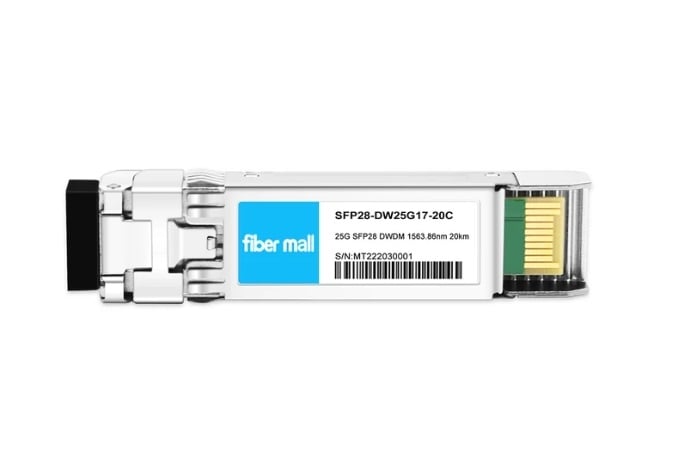
An Overview of SFP28 Transceivers
SFP28 transceivers are a complex type of module that is designed for 25G Ethernet and 25G DWDM applications. They double the data rate of SFP+ transceivers while using similar form factors through a high-speed interface for data transmission over fiber optic cables. This is achieved by them using advanced modulation techniques which help to ensure efficiency as well as reliability in data transfer.
These modules are fitted with LC duplex connectors and can operate with other network equipment thus making it possible to upgrade networks for better performance seamlessly. Depending on what the network needs, SFP28 supports various distances, starting from short-reach over Multi-Mode Fiber (MMF) and going all the way up to long-reach over Single-Mode Fiber (SMF).
The power efficiency of these devices remains among their most outstanding features. They consume less energy than earlier versions did thereby contributing towards lowering operational costs in data centers at large. Furthermore, they can work together with existing systems based on SFP+ without requiring extensive rewiring or new hardware, hence enabling cost-effective migration towards higher bandwidth capacities.
To sum up, modern networking solutions heavily rely on SFP28 transceivers which offer greater speeds, flexible deployment choices and energy saving abilities thus supporting increased requirements for information processing as well as transmission within contemporary data centres.
Key Features of a 25G DWDM SFP28 Optical Transceiver
- Fast Data Speed: The 25G DWDM SFP28 optical transceiver is designed to support data transmission rates of up to 25 Gbps, making it ideal for applications requiring high bandwidth and future-proofing network infrastructure.
- Dense Wavelength Division Multiplexing (DWDM) Capability: This device supports DWDM technology, which enables multiple data channels to be multiplexed over a single fiber using different laser light wavelengths (or colors), thus increasing the capacity of current fiber optic networks without additional fibers.
- Longer Reach: It has the ability to transmit data across many kilometers; therefore, it can be used in various distance requirements thus flexible for metropolitan area networks (MANs) as well as long-haul networks.
- LC Duplex Connector: An LC duplex connector usually comes with this module; hence it can easily integrate into existing network setups by connecting with standard fiber patch cables since they are fully compatible with each other.
- Low Power Consumption: These modules were created keeping power efficiency in mind so that they would help towards reducing overall power consumption within networks leading not only decreased operational cost but also contributing towards greener data centers altogether.
- Hot Swappable: Like any other SFP module type out there – these ones included -the 25G DWDM SFP28 transceivers are hot-swappable, meaning they can be inserted or removed from a system without having to turn off the system itself, hence enhancing service uptime and operational flexibility too!
- Wide Compatibility Range: Routers, switches, etc., can all work well with them at hand, saving steps during the upgrading process while still providing cost-effective solutions for networking needs demanding higher throughput.
The Role of Wavelength in DWDM Transceivers
Wavelength is very important when it comes to DWDM transceivers because it allows many data channels to be multiplexed on one optical fiber. Each channel has a different wavelength assigned to it – this means that with various laser light wavelengths, a DWDM transceiver can send multiple signals at the same time without them interfering with each other. The utilization of these wavelengths is what makes DWDM systems work best by increasing their bandwidth capacity, which in turn enables higher rates of data transmission and growth of network capabilities without any need for additional physical fibers. Hence, accurate management of wavelength should be done so as to achieve optimum performance and reduce cross-talk in DWDM systems.
What Are the Advantages of Using 25G DWDM Transceiver Modules?
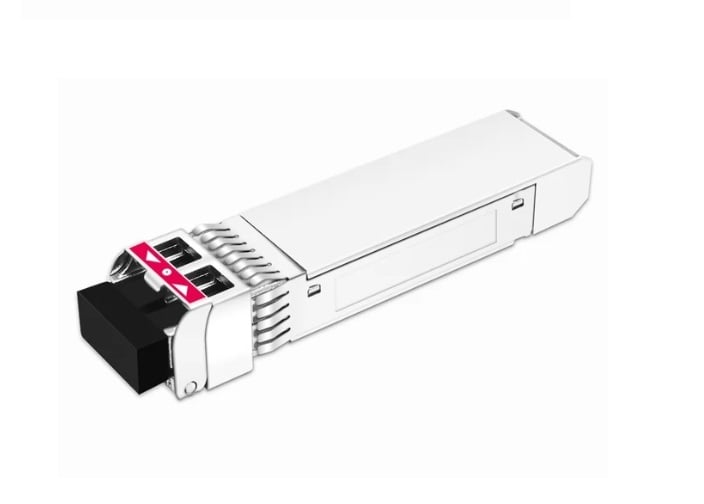
Enhanced Data Rates and Bandwidth
A number of modern networking benefits come along with the 25G DWDM transceiver module:
- Speeding up Data Transmission: These modules can transmit data at speeds of up to 25 Gbps per channel. With cloud computing, data centers, and multimedia apps demanding higher data rates, this is a perfect fit.
- Efficiency in Bandwidth Usage: The 25G SFP28 transceivers can multiplex many data channels through one fiber by using DWDM technology so that bandwidth is optimized and the capacity of the current fiber infrastructure increased without having to add more physical fibers.
- Scalability for Network Expansion: Scalability has been taken into account during the design phase of these transceivers allowing smooth upgrades from 10G to 25G networks. Such scalability ensures that capacities can be grown in networks so that future requirements on data rates are met efficiently while still being compatible with the existing systems.
Compatibility with Existing Infrastructure
Transceiver modules with 25G DWDM are built to fit in smoothly with current network infrastructures. They can be used with 10G networks and since they are compatible, this ensures a seamless transition as well as scalable upgrade paths for service providers. What this means is that managers of networks have the liberty to fix these transceivers within their existing DWDM frameworks without necessarily doing main repairs or using much capital. Furthermore, such a module supports many types of equipment already in use and so gives flexibility which also reduces the risk of becoming obsolete technologically. Therefore, adopting 25G technology can greatly enhance performance and capacity while utilizing investments already made on fiber optic infrastructure.
Long-Distance Transmission: 10km, 15km, and Beyond
To support long-range optical communication systems, 25G DWDM transceivers are built to work at various transmission distances such as 10km, 15km, and many more. Such modules include advanced Forward Error Correction (FEC) and low-loss optical elements that help preserve signal integrity over long hauls. Additionally, they use powerful lasers and optimized modulation schemes, which can reduce attenuation and dispersion effects, thereby ensuring reliable high-speed data transfer. The above-mentioned features make it possible for these devices to be integrated into metropolitan area networks (MANs) as well as wider regional or inter-city networks without lowering the data rate or compromising signal quality, hence guaranteeing effective connectivity in distant places.
How to Choose the Right 25G DWDM SFP28 Module for Your Network?
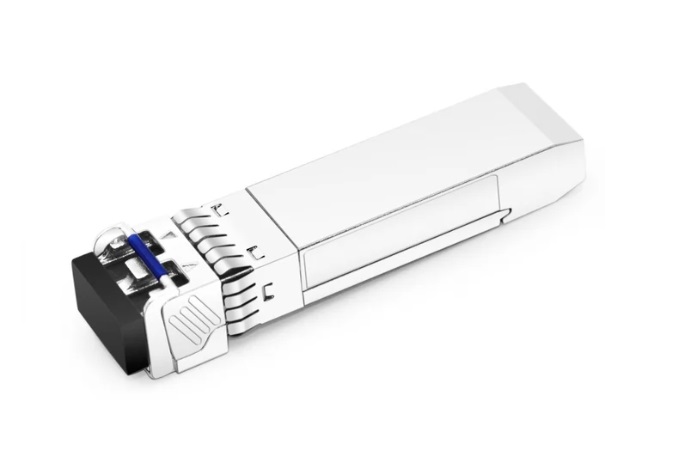
Evaluating Single-Mode Fiber (SMF) Options
While selecting the right 25G DWDM SFP28 module for your network, it is important to consider these Single-Mode Fiber (SMF) options based on current industry standards and best practices:
- Distance Requirements: You should know how far your network needs to transmit signals. There are different types of SMF with different performance characteristics over various distances, such as G.652 (standard SMF) and G.655 (non-zero dispersion-shifted fiber). For example, G.652 can be used up to 80 km without dispersion compensation, while G.655 has low dispersion at long-haul applications.
- Bandwidth and Data Rate: Ensure that the selected SMF supports high bandwidths and data rates required by 25G technology. One good example is G.652.D fibers which supports high data rate and compatible with advanced modulation formats in DWDM systems.
- Compatibility & Interoperability: Confirming if the 25G DWDM SFP28 modules work well with your existing network hardware and infrastructure is key. Modules must comply with relevant ITU-T recommendations to allow easy integration or interoperability between systems; also, check whether connected patch cords match those specified for installed fibers.
By considering these Single-Mode Fiber options critically, you will be able to choose what suits best for your network in terms of performance so that there is efficient and reliable long-distance optical transmission through them.
Understanding LC Connector Types
Lucent Connectors or LC connectors are commonly used in crowded network settings for their small size and dependability. They can come in different forms, each best suited for a specific use:
- Simplex LC Connector: This type of connector is used for single fiber connections where only one line of low-bandwidth data is required. It is typically deployed in telecoms and data applications that need one channel.
- Duplex LC Connector: A duplex LC connector consists of two fibers and connectors joined together by a clip. This makes it suitable for applications that require simultaneous bidirectional communication. These connectors are widely used in Ethernet and fiber channel environments because they improve efficiency while reducing cabling needs.
- Uniboot LC Connector: Uniboot LC connector houses two fibers within a single boot so as to reduce cable congestion. It saves space and makes cable management easier than other connectors with separate boots for each fiber. These features are particularly useful in tight data center environments where every inch counts.
Knowing what your network demands will allow you to select an appropriate LC connector that will work best with it, thereby ensuring better performance and tidying up cable organization.
Comparing Tunable and Fixed Wavelength Modules
When selecting between fixed and tunable wavelength modules, this is what you need to know:
- Tunable Wavelength Modules: These modules provide for changeability of the wavelength over a given range. This adaptability allows the operators of networks to manage their allocation effectively and make dynamic adjustments aimed at maximizing performance. They are most useful in situations where demand patterns are volatile or when there are urgent deployments. Still, they can also save inventory because only one tunable module may substitute several fixed-wavelength ones.
- Fixed Wavelength Modules: Fixed wavelength modules function on specific frequencies determined during manufacturing. They offer easier installation processes than tunable counterparts, making them cheaper, especially if used within networks that require stable wavelengths mostly. Such devices suit old systems having predictable traffic loads, with long-term planning for different colors being necessary. The simplicity inherent in this type increases reliability while cutting down initial investment costs.
In summary, it all comes down to what your network needs: flexibility or stability. For dynamic environments where things keep changing now and then, go for tunable—they’re more versatile and efficient, too. On the other hand, if everything remains constant forever, like in some application areas, then choose fixed ones since these will never fail you once installed properly. they’re cheap, too!
Common Issues and Solutions in Deploying 25G DWDM Optical Transceivers
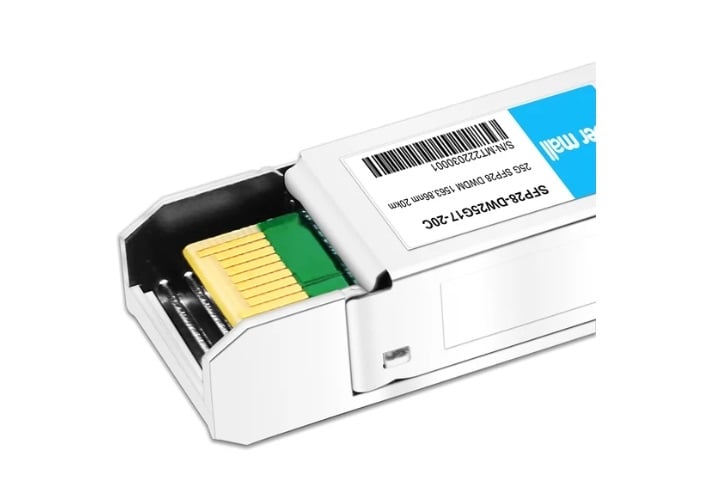
Troubleshooting Optical Cable Connections
When fixing connections for 25G DWDM optical transceivers, there are multiple common problems and solutions that should be taken into account.
- Dirty or Contaminated Connectors: The main cause of optical link problems is having contamination on the end face of connectors. Use a fiber scope to inspect connectors then clean them using correct tools and methods for fiber optic cleaning; before connecting ensure both the connector and adapter are clear of dust and debris.
- Bend Radius Violations: Failure to meet the minimum bend radius requirements for optical cables can lead to signal loss as well as reduced performance. To avoid micro-bending and macro-bending losses, it is important to check if the recommended bend radii specified by manufacturers are followed when dealing with optical cables.
- Incorrect Connector Type or Poor Mating: Having mismatched or loosely seated connectors can result in significant connectivity troubles. Confirm that every connection is firmly mated and that connector types match (e.g., LC to LC, SC to SC); use an optical power meter for checking signal levels correctness after making a connection.
These simple steps address most typical difficulties encountered when working with 25G DWDM networks; this greatly enhances reliability/robustness while at the same time boosting performance levels achieved over these links.
Addressing DWDM Channel Interference
DWDM channel interference can seriously disrupt network performance and reliability. The main causes of DWDM interference are crosstalk between channels, nonlinear effects, and filter misalignments. The following measures can be taken to deal with these problems:
- Reducing Crosstalk: This happens when signals from neighboring channels mix thereby causing interferences. To prevent this, it is important that the spacing between two adjacent channels should be in accordance with DWDM system requirements. Also, use higher-order modulation formats and wideband filters which have good out-of-band rejection for better channel separation.
- Controlling Nonlinear Effects: Signal quality degradation may result from four-wave mixing (FWM) or cross-phase modulation (XPM), among other nonlinearities. What needs to be done here is applying dispersion management techniques alongside optimizing optical signal power levels so as to minimize such interactions. Additionally, Raman amplification can be deployed for enhancing the integrity of signals through the reduction of nonlinearity effects.
- Filter Alignment: When DWDM filters are not aligned correctly, there is a possibility of signal attenuation as well as interference between different wavelengths used by various channels. Therefore, it is necessary to carry out regular maintenance checks coupled with precise calibration of optical add-drop multiplexer (OADM) and reconfigurable optical add-drop multiplexer (ROADM) filters for accurate alignment purposes. Moreover, automated calibration systems could be utilized in order to keep optimal settings of filters dynamically.
By focusing on these key areas systematically network operators will not only reduce on chances for but also enhance overall performance as well as robustness against DWDM channel-interference within their optical networks.
Ensuring Compatibility with MSA Standards
If you want different vendors’ elements to work together as expected in a DWDM system, it is important that you stick to the rules in Multi-Source Agreement (MSA) standards. MSA standards define how components should handle physical, electrical, and optical specifications. For compatibility reasons:
- Physical specifications compliance: Ensure that transceivers, connectors and other hardware components possess the right dimensions and form factors as per MSA requirements. This will make it easy for you to integrate different vendor’s parts into your system or replace them when need be.
- Adherence with Electrical Specifications: Make sure all interfaces for electrical systems within your DWDM equipment are designed according to MSA standards; this involves correct signal patterns and voltage levels, among others, which should be kept stable throughout the entire working environment of such devices so they can interoperate reliably.
- Optical Interface Conformance: You should also confirm whether optical power levels, wavelengths and signal integrity of those transceivers or any other relevant part meet MSA criteria. This avoids situations like signal attenuation where communication between devices becomes unreliable.
These MSA guidelines must be strictly followed by network operators if they want their DWDM systems to be robust enough for scalability purposes, hence enhancing the general performance of the whole network over time.
Future Trends in DWDM and SFP28 Technology
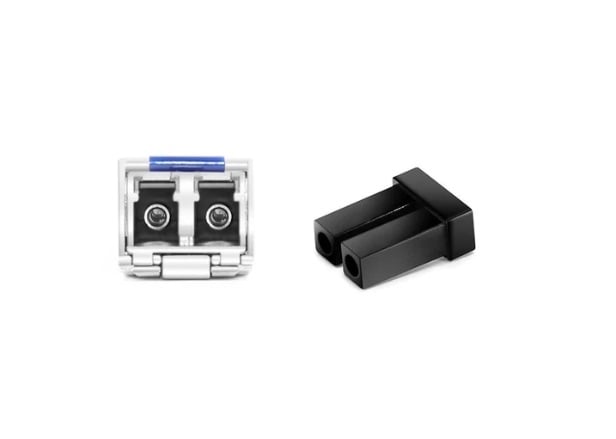
Emerging Applications in 5G and Beyond
The development of Dense Wavelength Division Multiplexing (DWDM) and SFP28 technical know-how for 5G networks was greatly influenced by the rollout of such kind of network connection and its subsequent improvements. With the increasing adoption of 5G, there is a need for data transmission systems that have a higher capacity and lower latency so that they can facilitate different applications like smart cities, autonomous vehicles, and IoT.
- Enhanced Mobile Broadband (eMBB): DWDM technology meets the high bandwidth demands imposed on them by 5G networks thus enabling enhanced mobile broadband applications. Such applications may include, among others, high-definition video streaming or downloading, faster data rates for mobile users, and augmented reality (AR). It is possible for operators to use DWDMs in order to achieve maximum throughput of data as well as efficiency in network usage, which will match with the exponential growth rate being experienced today due to modern application developments requiring more information sharing.
- Massive IoT Connectivity: The main goal behind deploying the 5th generation cellular wireless communication system is connecting large numbers of devices used in the Internet of Things(IoT), ranging from industrial sensors to consumer gadgets. In this case, DWDM, alongside other interfaces like SFP28, is used to create reliable backhaul links between cell sites which support very high speeds necessary for massive machine-type communications(MTC). For instance, many robust, efficient transfers should be made among various local center processing units through different IOT devices scattered all over a given area.
- Ultra-Reliable Low-Latency Communications (URLLC): There exist some applications, such as smart grid management systems, where telemedicine or autonomous driving needs real-time responses without any delay; hence, ultra-reliable low-latency communication channels have become mandatory. Multiple wavelength simultaneous transmission capability possessed by DWDM technology makes it an ideal candidate for providing high-speed interconnections needed by these types of devices. In such a situation, the quick decision-making process would be compromised if not done in the shortest period possible for applications that cannot tolerate delays, thus ensuring real-time data processing and decision-making is achieved.
Looking into the future, 5G networks with DWDM and SFP28 will not only improve current services but also foster innovation that is necessary for more advanced applications handling larger volumes of data.
The Evolution of DWDM Systems with 100GHz Transceiver Modules
The bright direction to load shading multiplexing systems in the evolution of dense wavelength division is the modules of 100GHz transceiver. Initially, there were wider channels in operation within DWDM systems so that simpler filters and less strict design requirements became possible. However, this was considered old-fashioned as narrower channel spacing, such as 100 grids or even 50 GHz grids, which came into being due to higher bandwidth demand and more efficient spectrum utilization.
Modules of 100 GHz transceiver have acted as a pivot during this switch which has offered an equilibrium between easier deployment together with spectral efficiency. These transmissions enable crosstalk at tolerable levels while maintaining higher data rates per channel. Additionally, performance improvement on 100GHz transceivers has been achieved by the use of tunable lasers, among other optical components innovations coupled with advanced modulation formats, thereby making it possible for longer transmission distances as well as increased capacity support in DWDM systems.
Again, this has allowed for networks that are both scalable and flexible because now one can allocate bandwidth dynamically and respond to different traffic needs, thus ensuring optimal network performance whenever required by operators; therefore, they should be able to do so efficiently where applicable according to their needs at any given moment. As much as technology advances further with time – next-generation applications like 5G cloud computing high-definition streaming services, among others, will require larger amounts of data. Hence, they cannot be met without using these types (i.e., hundred gigahertz) transceivers.
Integrating DWDM with Data Center Networks for Improved Performance
Combining dense wavelength division multiplexing (DWDM) with data center networks can greatly enhance performance as it enables higher bandwidths, lower latencies and better scalability. With DWDM technology, different wavelengths are used to send multiple data streams at once through one optical fiber, thus increasing capacity without extra physical infrastructure. Therefore, existing network resources will be utilized more efficiently, leading to significant savings in costs.
Moreover, these DWDM systems have additional features like tunable transceivers and advanced modulation techniques that support dynamic adjustment according to traffic patterns or changes in the network conditions which is an important aspect considering modern data centers experience varying demands coupled with high levels of availability needed for reliability. The adoption of DWDM also allows for faster connections between geographically dispersed sites where low latency links are required by distributed computing environments and cloud services hosted within them.
In addition, integrating disaster recovery efforts with business continuity plans becomes easier when using this type of communication method together with storage area networks (SAN). The ability to transfer large volumes of data over long distances rapidly ensures that backup and restore operations can be performed within minimum time frames thus reducing risks associated with loss or corruption of critical information during such events. As we move towards 5G AI-enabled era where centres will need higher speeds across wider areas than ever before; still DWDM stands out as a key technology for achieving desired levels of performance along side resilience in data centers.
Frequently Asked Questions (FAQs)
Q: What is a 25G DWDM SFP28?
A: The 25G DWDM SFP28 is the small form-factor pluggable optical transceiver that supports the technology of Dense Wavelength Division Multiplexing (DWDM) at the data rate of 25Gbps, and this type of transceiver is mainly used in data center networking or telecom systems for increasing bandwidth over existing fiber infrastructures.
Q: How does a tunable SFP28 work?
A: Tunable SFP28 allows users to adjust what channel wavelength(s) should be sent out as an optical signal. This makes it easy to manage data center cabling and optical interconnect solutions since one module can do the job that would have required multiple fixed-wavelength modules, thus optimizing network performance as well as inventory management.
Q: What are the benefits of using 25G DWDM SFP28 transceivers?
A: Some of the advantages offered by the 25G DWDM SFP28 transceivers include higher data rates than those achieved with 10 GbE optics, efficient utilization of single mode fiber through DWDM technology and improved scalability; these attributes make them best suited for applications like dense connectivity or high bandwidth requirement environments such as optics storage networking and wireless&5g optical networks among others.
Q: Can I use a 25G DWDM SFP28 module with 10G Ethernet infrastructure?
A: No, you cannot use a 25G DWDM SFP28 module on a 10 GbE Ethernet infrastructure because it only works at rates up to about twenty-five gigabits per second. Nevertheless there are some multi-vendor MSA compatible optic modules that backward compatible with certain technologies so they may still work even if not certified by both vendors involved in their manufacture.
Q: What’s the difference between fixed and tunable 25G DWDM-SFP28s?
A: A fixed 25G DWDM SFP28 operates at a single, pre-set wavelength. In contrast, the tunable variant allows for user selection and adjustment of the wavelength within a specific range (typically centered on the C-band), making it much more versatile for different networking applications.
Q: Can existing multiplexers work with 25G DWDM SFP28 transceivers?
A: Absolutely, most of the time 25G DWDM SFP28 transceivers will work with mux demux systems made for use in DWDM networks. You must check if the wavelength and channel spacing (e.g., 100GHz) are compatible.
Q: How far can a 25G DWDM SFP28 go?
A: The maximum distance a 25G DWDM SFP28 can cover depends on its specifications, but typically standard versions support up to 10 km over single mode fiber. Longer distances may require specific configurations and amplification technologies.
Q: Do the DOMs get supported by modules of 25G DWDM?
A: Yes, most modules of 25G DWDM support Digital Optical Monitoring (DOM), which allows us to monitor real-time optical output power, optical input power, laser bias current, and transceiver temperature to ensure our products’ quality as well as network performance.
Q: What is the relation between the SFF-8472 standard and 25G DWDM SFP28?
A: In this context, the term refers to an industry-wide agreement that establishes what information should be stored within digital diagnostic memory located inside optic transceivers such as SFPs or SFP28s; it also provides common methods for accessing this data regardless of manufacturer nameplate, unlike other standards like MSA whose interoperability only covers mechanical form factors without extending into electrical interfaces among different suppliers’ products either from the same vendor or not.
Q: How should I select my data center’s correct type of 25G DWDM SFP28?
A: Selecting the appropriate type of 25 Gbps Dense Wavelength Division Multiplexing Small Form-factor Pluggable+ Transceiver that meets your data center requirements might involve considering various aspects such as required distance, compatibility with existing hardware, channel spacing (e.g., 100GHz), support for DOM among others; also you could go through specifications or follow testing program recommendations for guidance when making the decision on this matter.
Related Products:
Related posts:
- Coherent Transceiver Overview: CFP2-DCO vs QSFP-DD DCO vs OSFP-DCO
- Next-Gen Data Transfer: SFP112/QSFP112/QSFP-DD800/OSFP 800G DAC
- Everything You Need to Know About CWDM Transceivers: From SFP Modules to 80km Optical Fiber Connectivity
- Research and Design of 800G OSFP 2xDR4 Optical Transceiver Module

